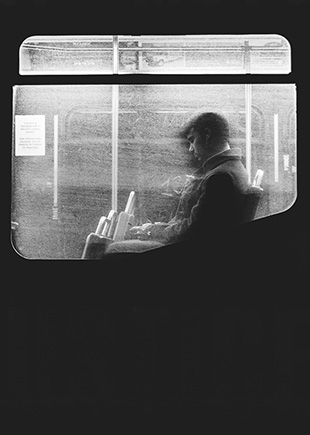When you are establishing a darkroom for black and white printing, you need to engage in one very important test before you start printing. Depending on the safe light you have installed—and its various characteristics—there will always be an amount of cumulative exposure that may have an impact on your prints.

Photo by Alex Iby
Cumulative exposure is the amount of exposure to light, given to a light sensitive paper, from the time being removed from its light tight box, exposed, manipulated, developed, washed, and eventually stopped.
From this point (fixation) the paper is no longer light sensitive and will not be affected by further exposure. It’s possible at this point that the paper may have been exposed for a total of ten minutes, accumulated through all these manipulation and processing steps.
This may result in what’s termed a fogged print—a print that has received exposure on top of what was given in the enlarger. The result will be a murky, gray print. Sometimes the effect is so subtle, you may not identify this result as being caused by cumulative exposure. It is also incorrectly assumed that photographic paper is not sensitive at all to your safe lights. This is not correct. Leave the paper out long enough and it will fog. A fogged print looks dead and flat, with little contrast; this is a result you don’t want in your new darkroom. To get around this problem you need to do a cumulative exposure effect test.
Procedure for Cumulative Exposure Effect Test
1. Position safe lights at a datum point, approximately 1.3 meters from the developer tray and using a 25 watt bulb.
2. With white-lights and safe lights off, take a sheet of unexposed paper and process. This will yield a print of absolute white with no possibility of fogging from any light source.
3. Turn safe lights on.
4. Calculate the following for the next step:
- Your longest possible exposure, including possible dodging & burning time (e.g. 120 seconds)
- Time taken to move to processing trays (e.g. 10 seconds)
- Maximum development time (e.g 120 seconds)
- Maximum stop time (e.g. 30 seconds)
Total = 280 seconds = 4.6 minutes
5. Now double for safety. This gives a total of approximately 9 minutes.
6. Take out a piece of paper and place it on your work desk at your enlarger position.
7. Place an object that is totally opaque on the paper. The object should be half the size of the paper or smaller. A metal object is best—perhaps a large round washer or coin.
8. Leave the paper on the enlarging desk for half the time, approximately 4.5 minutes.
9. Now take the paper and place it as close as possible to your developer tray and leave for the remaining time to 9 minutes.
Cumulative Exposure Test Results
For optimum observation of your result, it’s best to take the print outside in full daylight so you can examine carefully. The darkroom is not the place for such an assessment.
The result should leave you with a piece of paper identical to the first paper if there is no cumulative exposure effect. It should be maximum white.
If there is some tone evident around the object you placed in the middle of the paper, there is cumulative exposure effect occurring. To correct this, change the placement of your safe lights and repeat test. You can also reduce the wattage of your light bulbs in the safe lights, or a combination of both.
Once you have established the cumulative exposure effect threshold, you are able to control the overexposure by not exceeding it. This will make sure that all your future prints in this darkroom will not suffer from this issue.
Like This Article?
Don't Miss The Next One!
Join over 100,000 photographers of all experience levels who receive our free photography tips and articles to stay current:






Mr. Jardin, thanks so much for this article. I run a camera store that still sells a lot of black and white film and photographic papers to college photo students. I live in New Orleans and there are 5 colleges in town that still teach traditional wet process. I didn’t see a date on this article, but I will share it with the students, as well as giving them a link to your wonderful site.
Robert Moldaner
Moldaner’s Camera and Imaging
New Orleans, LA